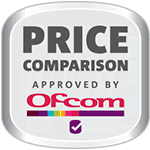Is shoppable TV the future, or a fad?
With traditional advertising in decline, shoppable TV looks compelling to advertisers – but will it interest consumers?

Shoppable TV is a concept few people are aware of, and yet the principle of buying things as they’re advertised on-screen is hardly new.
The dial-in Prestel service featured adverts back in the 1980s, while internet advertising has been with us since the early Nineties.
Even the prospect of buying things seen on TV isn’t new. Home shopping channels have been around for over 40 years – known historically as T-commerce.
The innovation behind shoppable TV involves watching a programme or advert and learning more about (or buying) what you’ve just seen without even having to pause the broadcast.
This is being done via a combination of existing and emerging technologies, to simplify the buying process as much as possible.
But is shoppable TV likely to catch on? And how might it change our viewing experiences?
Shop til you drop the remote
At present, the most common form of shoppable TV involves a QR code being displayed on a smart TV.
Scanning this instructs your phone or tablet to perform one of several tasks – downloading a brochure, visiting a webpage or adding an item into an ecommerce basket.
ITV was first out of the blocks domestically, offering LG TV owners the chance to opt into receiving on-screen notifications and buying certain items as they were displayed.
Available products tend to refresh as the on-screen content changes. This could potentially enable people to order clothes as they’re modelled live on This Morning’s catwalk, for instance.
The fourth season of Netflix’s Emily In Paris allowed viewers to scan the clothes worn by main actress Lily Collins using Google Lens, which would then load up similar outfits to buy.
However, scanning a QR code still involves a second device and sales may not be completed, making it harder for advertisers and broadcasters to confirm a sale was due to that particular programme.
Truly shoppable TV involves a purchase being made through the device there and then, as opposed to T-commerce methods like dialling a phone number or visiting a website later.
Manufacturers are trialling using voice control to add items seen on-screen to a shopping cart preloaded with user billing data, while remote controls represent another potential interface.
It would be easy to transform the blue button on remote controls into a universally recognised Buy Now tool, in the same way the red button accesses interactive services on many platforms.
Who benefits from this?
Advertisers would tell us that consumers benefit by ordering a product or learning more about it without having to leave their sofa – or potentially even unlocking their smartphone.
Of course, in reality, it’s the advertisers themselves who gain the most.
Not only do they drive new sales in innovative ways, but they also learn a great deal about consumers – what programmes we watch, which on-screen items we covet, and so forth.
And needless to say, QR codes are only the beginning.
Companies like Amazon are ideally placed to sell things they broadcast, with targeted advertising shown to Prime Video subscribers based on past order histories with one-click reorder options.
Consumers may initially relish being able to pause a soap opera to buy the kettle a character is depicted making a cup of tea with, but their tolerance for such intrusions will be finite.
Product placement never took off on British TV as it did in America, and Amazon’s Alexa (originally intended to drive seamless product ordering) has failed to boost sales.
Nobody watching a live sporting event will appreciate QR codes appearing on-screen every time a product, brand or trackside advert is displayed, interrupting (and ruining) the spectacle.
To be successful, shoppable TV will need to be discreet – only appearing when a user pauses a programme or presses a particular button on their remote control.
It should be seamless, quick and reliable, enabling people to place an order and forget about it.
There is undoubtedly potential for this technology to creep into broadcasting (especially on streaming services), but it won’t be to all tastes, and it would have to be optional.
And in the meantime, there’s nothing to stop you using Google Lens to identify something before sourcing it online…






